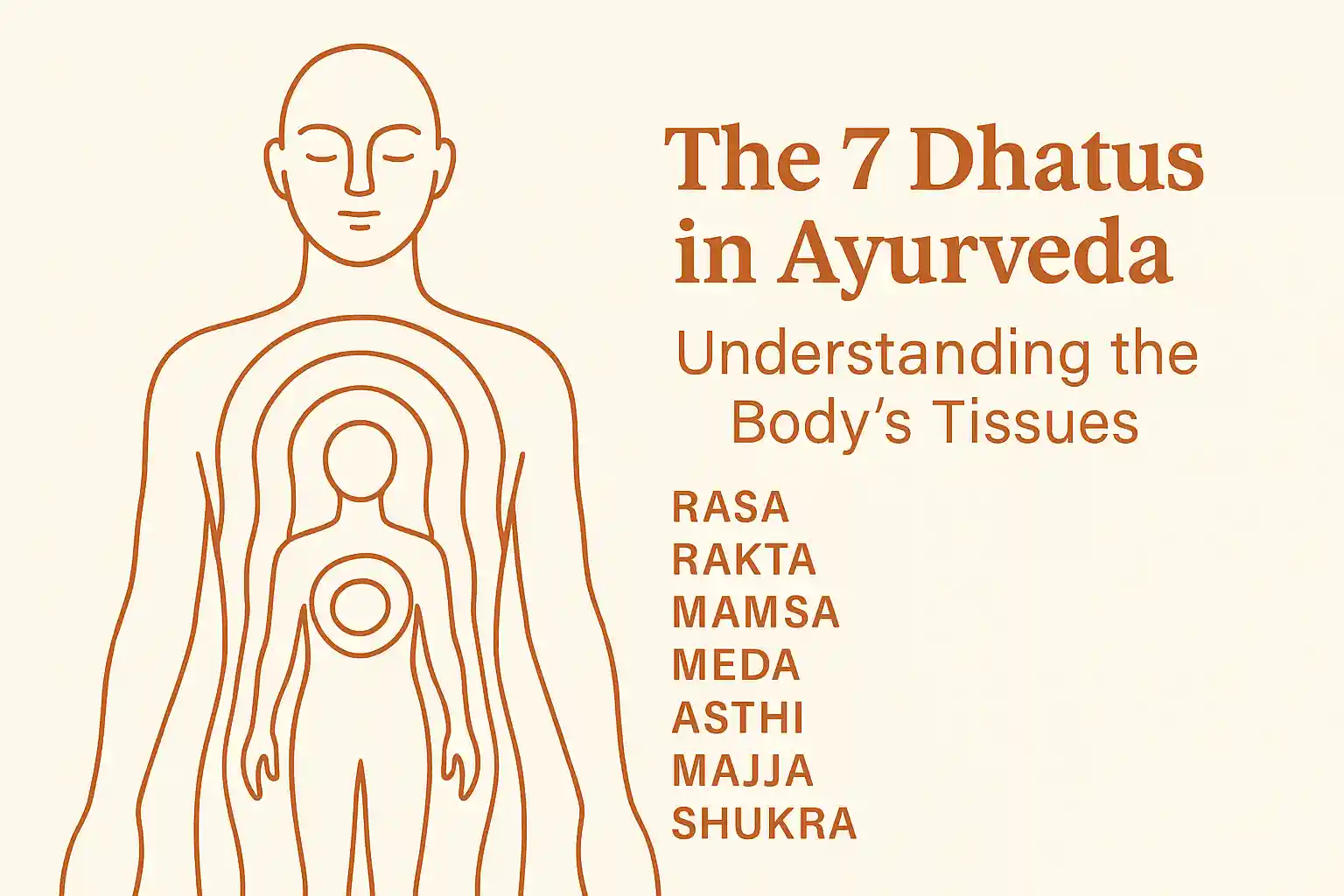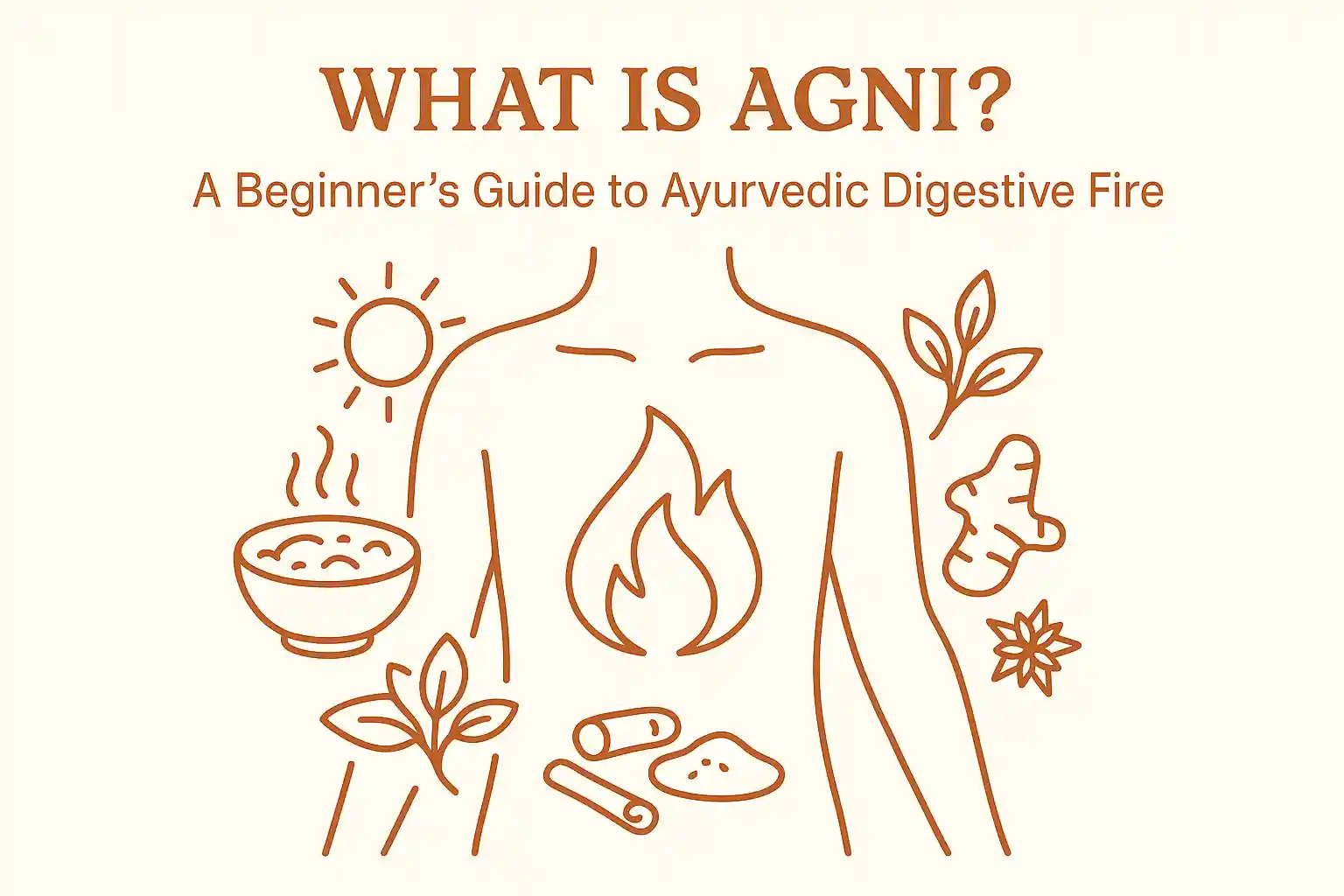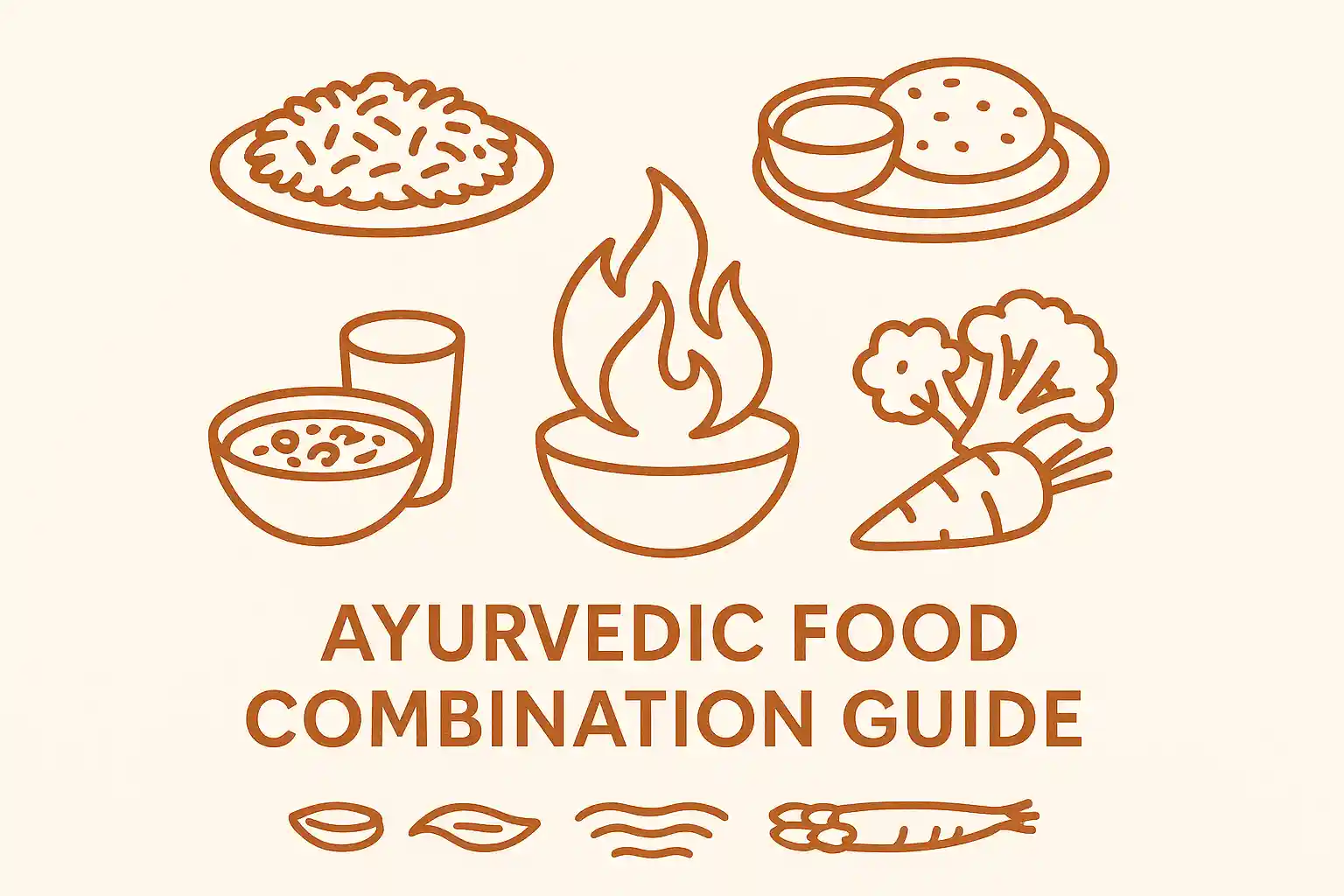
The Sapta Dhatus - seven vital tissues that form the foundation of physical health in Ayurveda
In Ayurveda, Dhatus are the building blocks of the physical body. The Sanskrit word "Dhatu" means "that which supports" or "that which holds." These seven vital tissues provide structure, support, nourishment, and function to the body. Understanding the Sapta Dhatus (Seven Tissues) deepens your grasp of how Ayurveda views health, disease, and nutrition—far beyond calories and nutrients.
This often-overlooked concept is key to understanding how food becomes body, how imbalance takes root, and how deep healing happens in Ayurveda.
What Are the 7 Dhatus?
The Dhatus form a sequential chain: each tissue is nourished by the one before it, starting from digested food (Ahara Rasa). Healthy transformation at each stage depends on the strength of Agni (digestive/metabolic fire) at every level.
| Dhatu | Meaning | Primary Function |
|---|---|---|
| Rasa | Plasma, fluids | Nourishment, hydration, transport |
| Rakta | Blood | Oxygenation, vitality, circulation |
| Mamsa | Muscle | Form, movement, protection |
| Meda | Fat | Lubrication, insulation, energy storage |
| Asthi | Bone | Structure, stability, posture |
| Majja | Marrow/Nervous | Neural coordination, immunity, sensation |
| Shukra (or Artava) | Reproductive tissue | Reproduction, regeneration, vitality (Ojas) |
The Formation of Dhatus
Each Dhatu is formed from the transformation of the previous one, guided by its own Dhatvagni (tissue-specific Agni). Here's how it flows:
Digested food (Ahara Rasa)
Rasa
Rakta
Mamsa
Meda
Asthi
Majja
Shukra/Artava
The ultimate by-product of this transformation is Ojas, the refined essence that supports immunity, vitality, and emotional resilience. During this process, natural waste products (Mala) are also formed and must be properly eliminated.
Functions of Each Dhatu
1. Rasa Dhatu (Plasma/Lymph)
- First to form from digested food
- Distributes nutrition to all tissues
- Disorders: anemia, dryness, fatigue
2. Rakta Dhatu (Blood)
- Carries oxygen and prana
- Linked to the liver, spleen, and skin
- Disorders: inflammation, skin disease, nosebleeds
3. Mamsa Dhatu (Muscle)
- Gives form, support, and strength
- Governs flesh and ligaments
- Disorders: muscle wasting, rigidity, tremors
4. Meda Dhatu (Fat)
- Lubricates joints and tissues
- Supports Kapha functions
- Disorders: obesity, lethargy, cysts
5. Asthi Dhatu (Bone)
- Provides support and uprightness
- Includes nails, teeth, hair (by-products)
- Disorders: osteoporosis, joint degeneration
6. Majja Dhatu (Marrow/Nervous Tissue)
- Fills bones, nourishes nerves and brain
- Deep connection to immunity
- Disorders: neurological issues, anxiety, MS
7. Shukra/Artava Dhatu (Reproductive Tissue)
- Supports reproduction, regeneration, Ojas
- Vital for vitality and long life
- Disorders: infertility, hormonal imbalance, low libido
Dhatu and Dosha Relationships
Each Dosha affects certain Dhatus more strongly:
Vata
Primary Dhatus:
- Majja (nervous tissue)
- Asthi (bone)
- Shukra (reproductive)
Pitta
Primary Dhatus:
- Rakta (blood)
- Rasa (plasma)
Kapha
Primary Dhatus:
- Mamsa (muscle)
- Meda (fat)
Imbalance in a Dosha often first shows up in its related Dhatu. For example, excess Vata can lead to dry bones (Asthi depletion), while excess Kapha may cause Meda buildup (fat accumulation).
Nourishing the Dhatus
Each Dhatu can be nourished through specific foods, herbs, and practices. Some examples:
Dhatus and Disease: The Concept of Kshaya and Vriddhi
In Ayurveda, tissue health is viewed in terms of Kshaya (depletion) and Vriddhi (excess). Both can lead to disease:
Kshaya (Depletion)
- Kshaya of Mamsa: muscle wasting
- Kshaya of Shukra: infertility, burnout
- Kshaya of Asthi: osteoporosis
Vriddhi (Excess)
- Vriddhi of Meda: obesity, lipomas
- Vriddhi of Kapha: congestion, heaviness
- Vriddhi of Rakta: inflammation
Diagnosis and treatment aim to restore Dhatu Samya (tissue balance).
Frequently Asked Questions
Final Thoughts
The seven Dhatus are not just biological structures; they are energetic processes of nourishment and transformation. Ayurveda invites us to see health as a continuum—from food to tissue to Ojas. When Agni is strong, and the Dhatus are properly nourished, we experience resilience, clarity, and vitality at every level.
Understanding and supporting your Dhatus is a profound way to take charge of your health from the inside out.
Continue Your Ayurvedic Learning Journey:
Related Articles

What Is Agni? A Beginner's Guide to Ayurvedic Digestive Fire
Discover Agni, the vital digestive fire in Ayurveda that transforms food into energy and health. Learn the 4 types of Agni, signs of imbalance, and practical ways to strengthen your digestive fire naturally.
12 min read
Why Food Combining Matters in Ayurveda: A Guide to Better Digestion
Discover the ancient wisdom of food combining in Ayurveda. Learn which food pairings to avoid and how proper combining can strengthen your digestive fire (agni) for optimal health.
7 min read